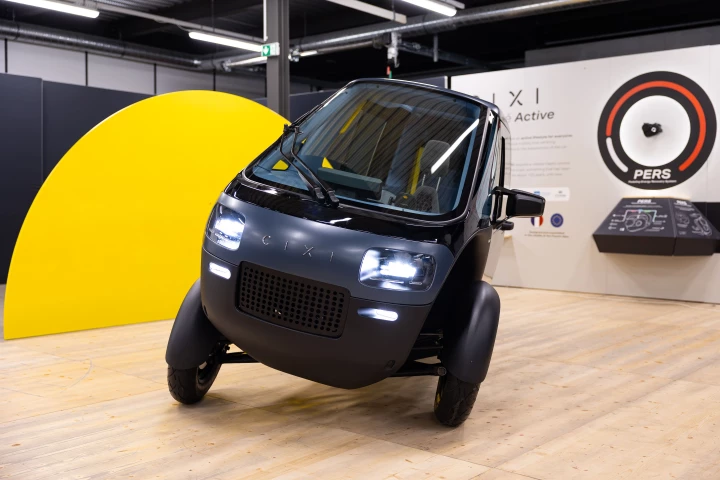Engineers at Stanford have developed motorized exoskeletons that can be strapped to a user’s legs to make running easier. In its current form it might not be something you’d wear down to the park for a jog, but it could eventually find use as a form of last-mile transportation.
There’s no shortage of exoskeleton designs out there, whether they’re helping wheelchair users walk again, protecting the elderly from falls, or saving industrial workers from strain. This new Stanford design, however, is more tailored towards making running a more appealing exercise or a more practical way to get around.
In its current form, it’s still an exoskeleton “emulator,” meaning it’s a big bulky machine that can really only be used on a treadmill in the lab. But the idea behind tests conducted by the Stanford team is to see if the mechanism will help, and by how much, before the device is slimmed down to be completely wearable.
And it’s a good thing they did these early tests, because the results surprised the scientists. The team tested two different modes of assistance: motor-powered and spring-based. While the former showed promise, the latter actually made it harder to run.
Since the human leg kind of moves like a spring while running, the researchers thought that a mode that stored and unloaded energy like a spring would be helpful. But interestingly, they found that it made running 11 percent harder than without the exoskeleton.
The motor-powered mode was more beneficial, though. In this mode, the motors pull a cable that runs up the back of the leg, extending the ankle as the toes push off the ground. In treadmill tests with 11 experienced runners, the team found that this mode made it 15 percent easier to run than without the exoskeleton. It should also boost a runner’s speed by 10 percent.
“Powered assistance took off a lot of the energy burden of the calf muscles,” says Delaney Miller, one of the researchers on the study who tested the devices. “It was very springy and very bouncy compared to normal running. Speaking from experience, that feels really good. When the device is providing that assistance, you feel like you could run forever.”
And that’s what the team was aiming for. If the final version of the device can be untethered, the researchers hope that it would encourage more people to go running as exercise, or even just to get around.
“You can almost think of it as a mode of transportation,” says Guan Rong Tan, an author of the study. “You could get off a bus, slap on an exoskeleton, and cover the last one-to-two miles to work in five minutes without breaking a sweat.”
The research was published in the journal Science Robotics. The team demonstrates the system in the video below.
Source: Stanford University




